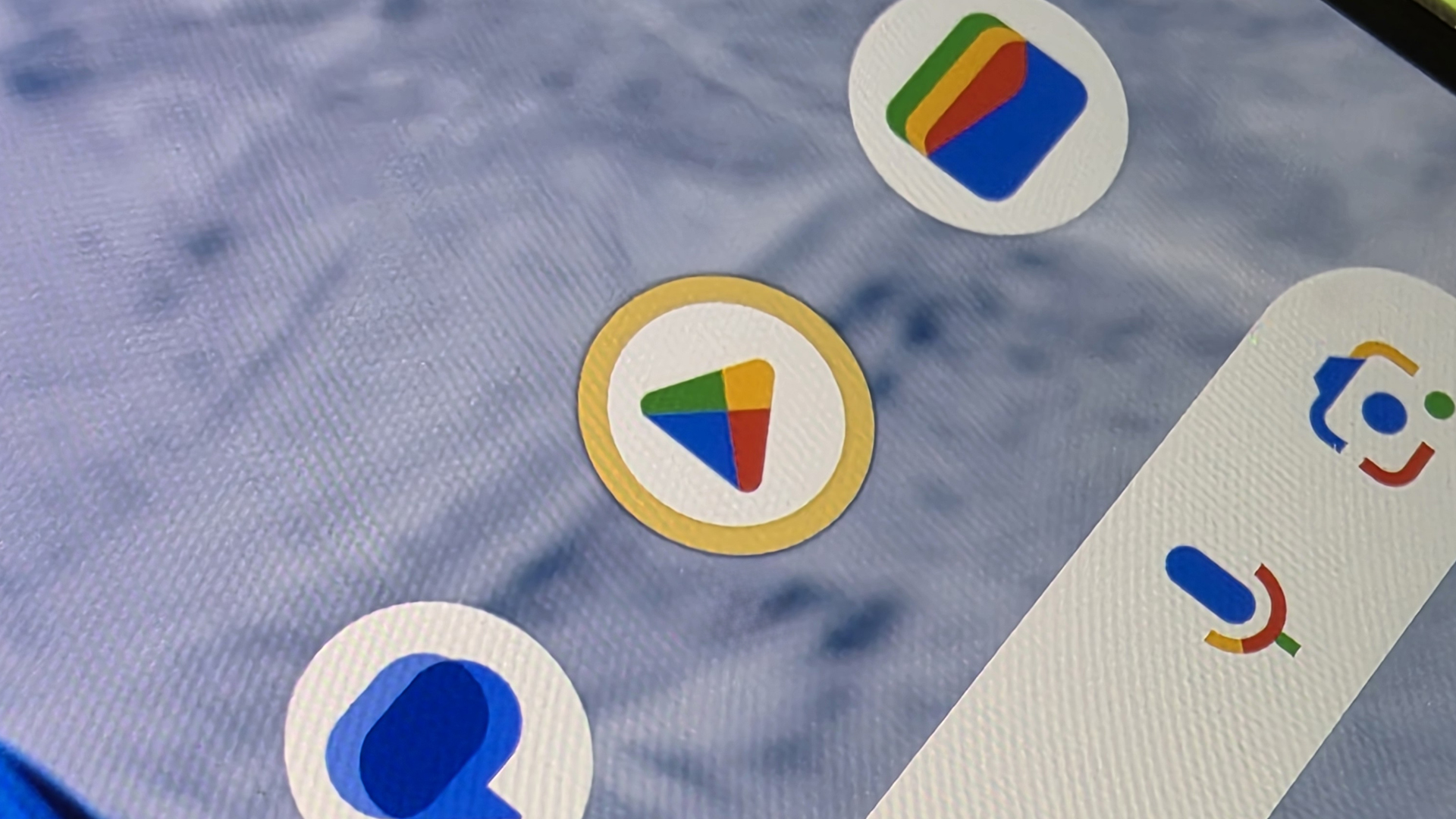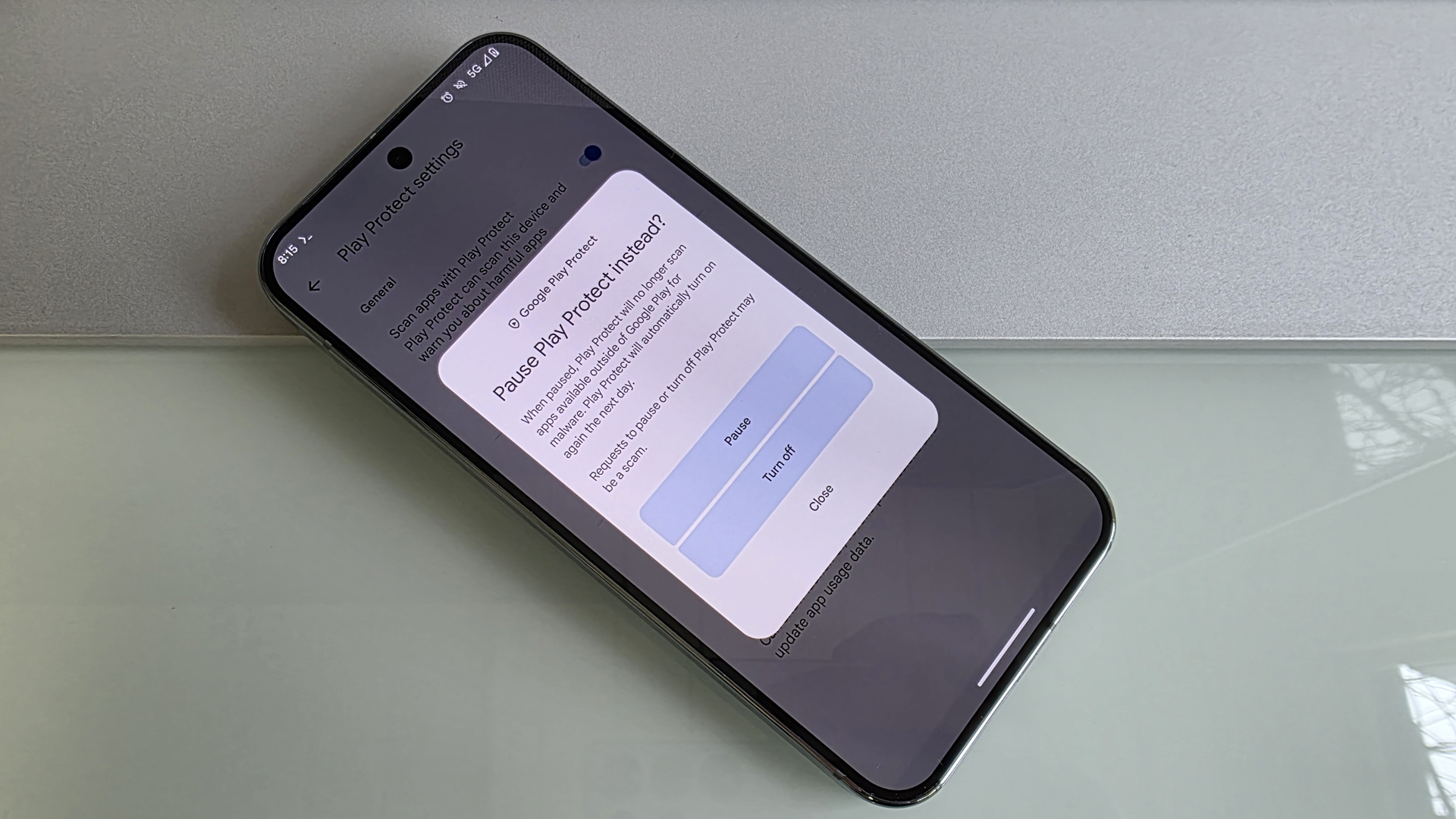This simple free Android update makes it safer and easier to sideload apps
An update to Google Play Store gives app installers a bit of help


Quick Summary
Google is pushing out an update that change the way that Play Protect works on your Android phone.
You'll be able to pause Play Protect if you install apps from a third-party source, rather than turning it right off.
Google is pushing out an update that changes the mechanism when you want to sideload an app on an Android phone, making it safer and easier.
Play Protect is designed to scan your apps to make sure there’s nothing malicious – it does this on install and periodically afterwards to make sure that everything is as it should be. But if you want to sideload an app, you’ll have to bypass Play Protect to get the external software or game installed on your device.
That’s a simple process normally – you just turn it off. However, the problem is that once you’ve turned Play Protect off, it’s no longer protecting your phone and it’s too easy to forget to turn it back on again. If you regularly install apps from third-party sources, you might be tempted to leave Play Protect off all the time to make the process simpler.
In a move to combat this sort of behaviour, an update to Play Protect (part of the Play Store app) now has the option to pause Play Protect, rather than turn it off entirely.
As uncovered by 9to5Google, pausing Play Protect will mean that it turns on again automatically the following day, so your protection returns.
The source reports that the new option appears in Google Play Store version 42.2.19-31, but when I checked two phones with this software version, I didn’t have the option, so it looks like there’s some server-side activation that’s needed too.

Why would you sideload apps on your phone?
One of the attractive things about Android devices is that you have greater freedom to do what you want with the hardware, unlike the iPhone. Sideloading apps has long been common for Android users and there are many situations where you might want to do it.
Get all the latest news, reviews, deals and buying guides on gorgeous tech, home and active products from the T3 experts
If an app is no longer supported or not available in your region, then sideloading gives you the chance to use it. If apps leak or are uncovered before their official launch, then sideloading is a great way to get access to them too. For example, this is how I first got access to Pokémon Go long before it officially launched in my region.
There are also some developers who choose not to put their app on the Play Store for whatever reason – and that often isn’t because it’s a malicious app. It might be because they don’t agree with Google’s policies. Or, it might be a homebrew app or even something that you’ve developed yourself.
Of course, Play Protect has a very valid function – it stops malicious practices, such as apps being installed in the background from a dodgy website. That’s the risk you take by not having Play Protect in place, because if apps can just install without any intervention, they can easily start sharing or stealing your data.

Chris has been writing about consumer tech for over 15 years. Formerly the Editor-in-Chief of Pocket-lint, he's covered just about every product launched, witnessed the birth of Android, the evolution of 5G, and the drive towards electric cars. You name it and Chris has written about it, driven it or reviewed it. Now working as a freelance technology expert, Chris' experience sees him covering all aspects of smartphones, smart homes and anything else connected. Chris has been published in titles as diverse as Computer Active and Autocar, and regularly appears on BBC News, BBC Radio, Sky, Monocle and Times Radio. He was once even on The Apprentice... but we don't talk about that.
You must confirm your public display name before commenting
Please logout and then login again, you will then be prompted to enter your display name.